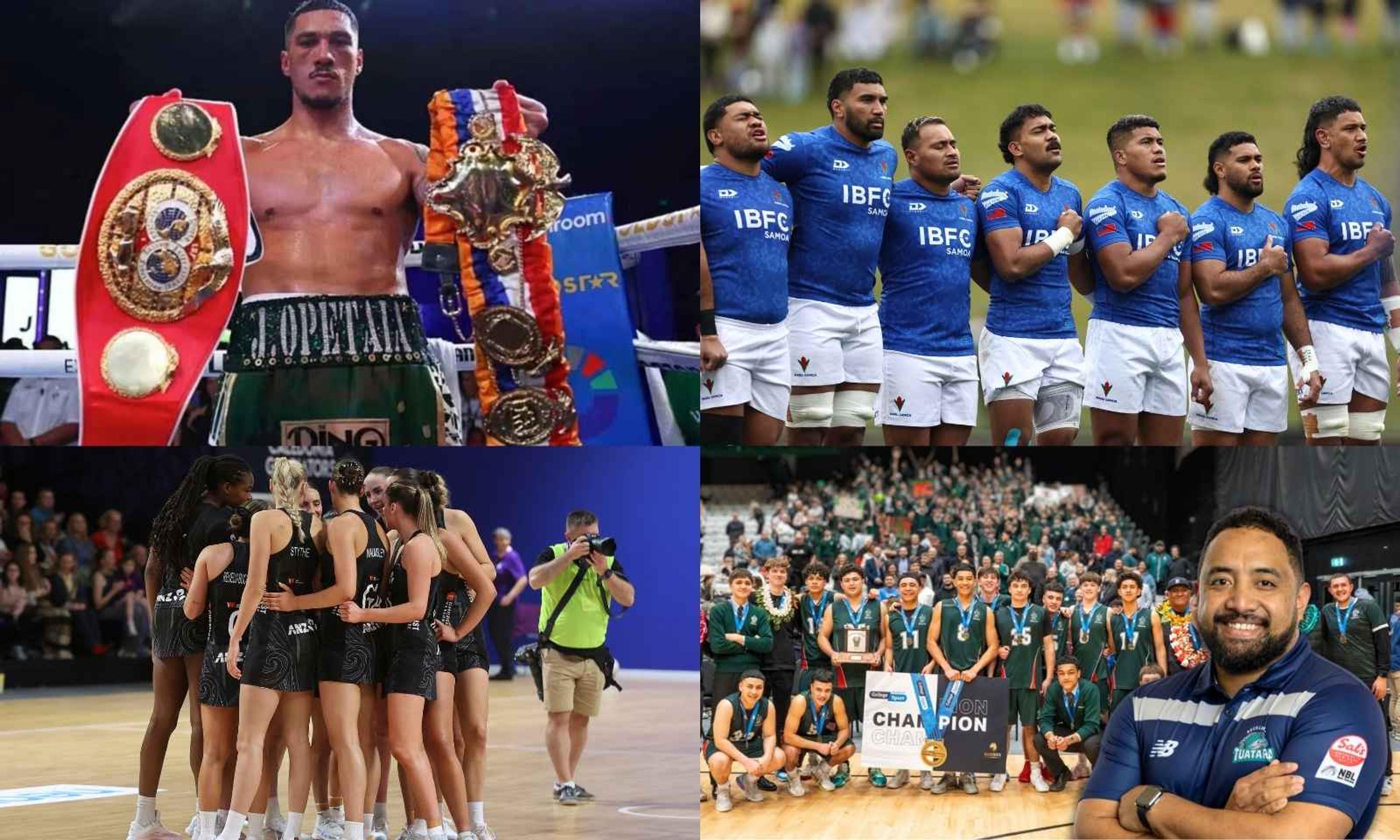
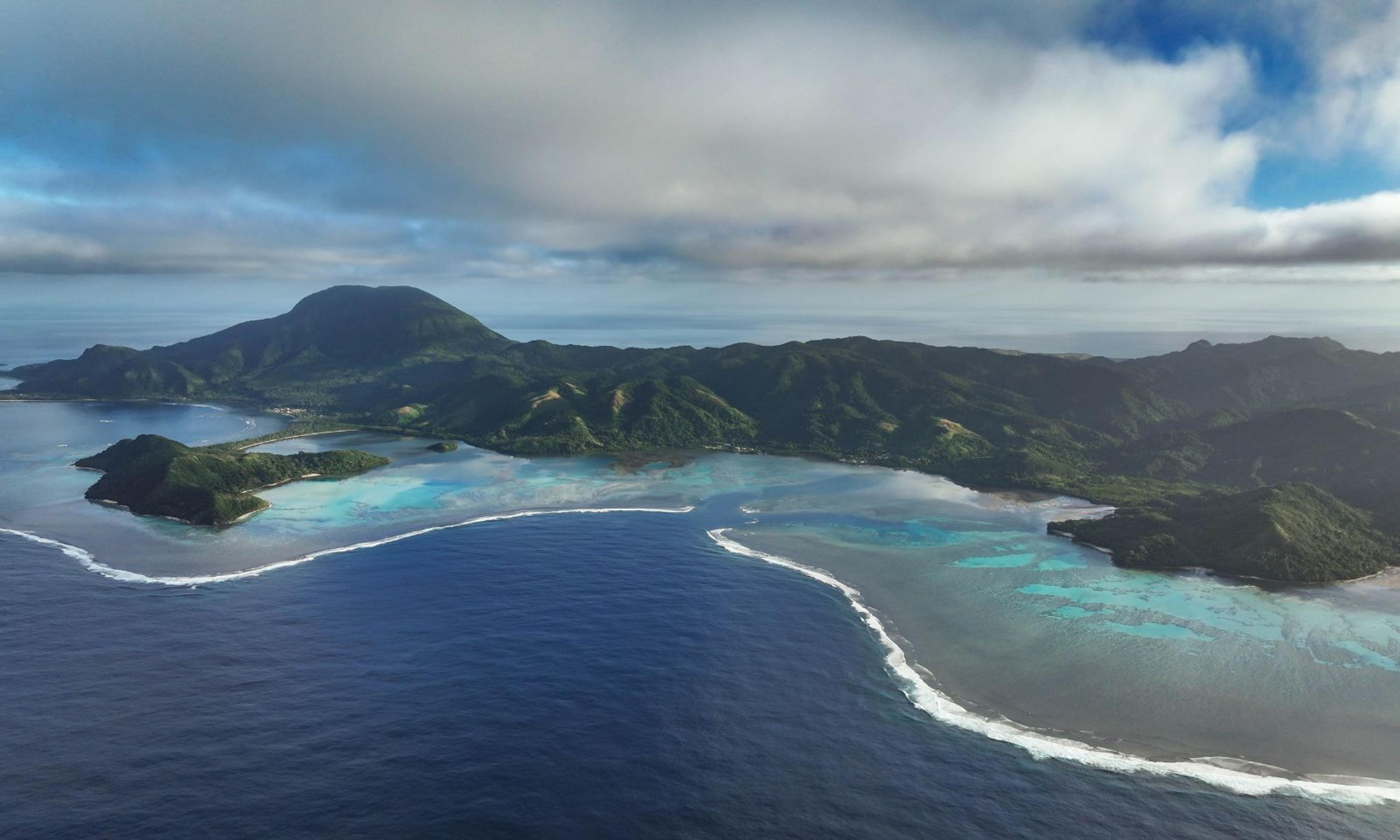
A drone shot of southern Kadavu, Fiji.
Photo/National Geographic Pristine Seas/Teresa Carante
Sharks, clams, turtles and classrooms: Inside the latest Pristine Seas ocean mission in Fiji
From Tabu reefs to science summits, the expedition team captures a snapshot of Kadavu’s biodiversity while working alongside educators and communities.

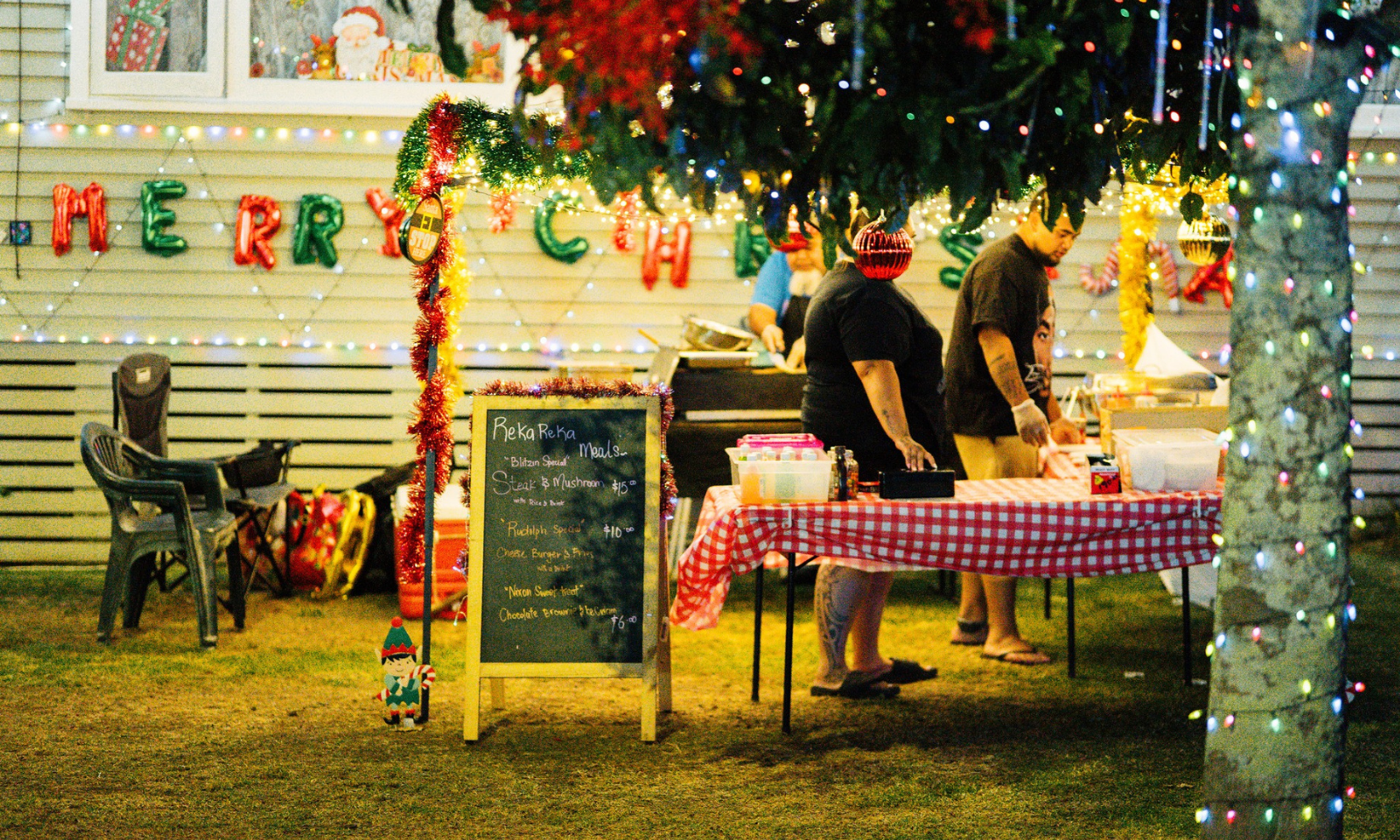
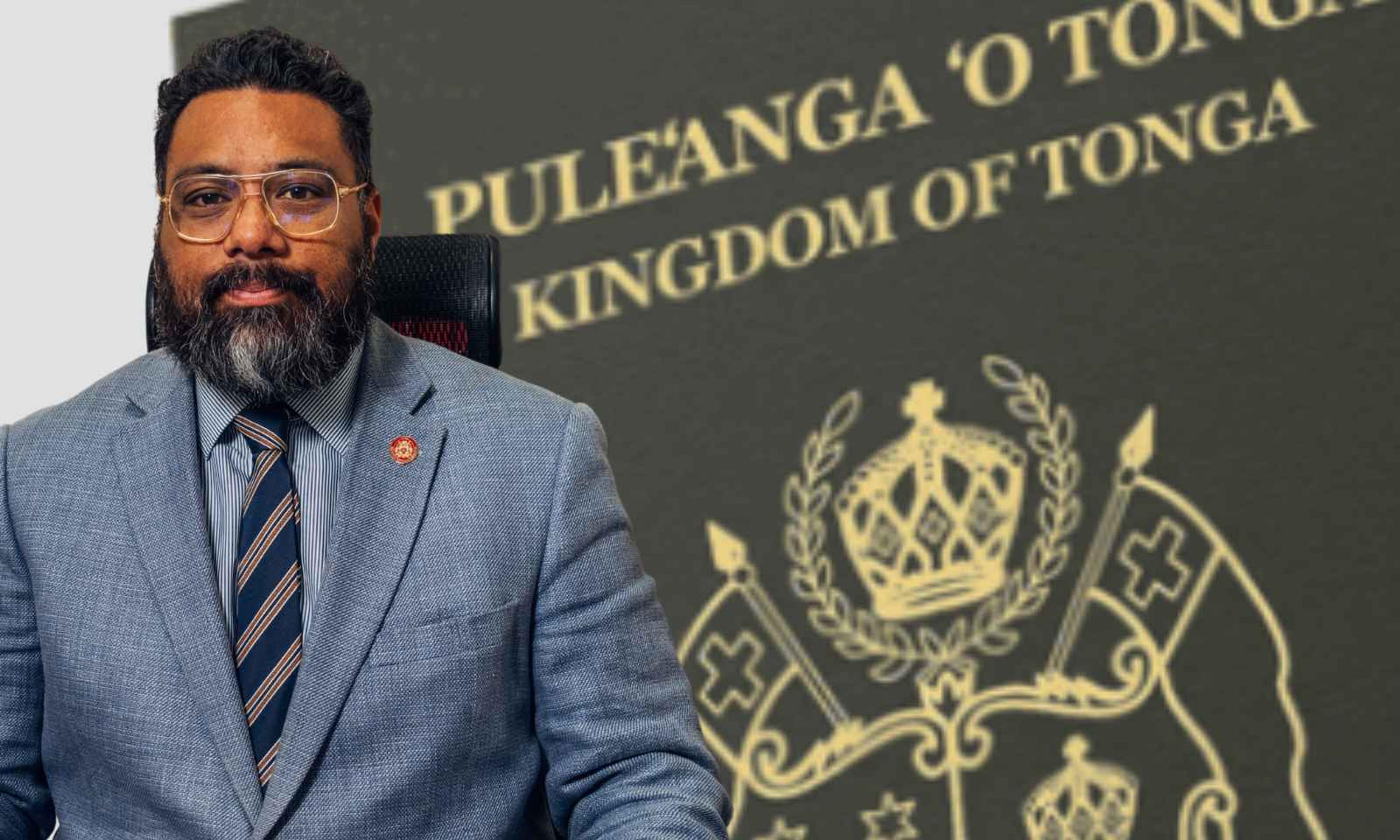
Fresh warning as Tonga PM defends citizenship investment scheme

‘I knew something was wrong’: Pacific children miss out on early hearing support

Pacific sports wrap: 2025’s massive highs, lows and historic firsts


Fresh warning as Tonga PM defends citizenship investment scheme

‘I knew something was wrong’: Pacific children miss out on early hearing support
The National Geographic Pristine Seas (NGPS) team is conducting research in Fiji’s Kadavu region, focusing on the Great Astrolabe Reef, one of the world’s largest barrier reefs and a critical site for marine biodiversity.
The expedition is the latest in a series of Pristine Seas missions across the Pacific. Over the past two months, the team has completed research in Tuvalu and Rotuma, gathering deep sea biodiversity data, mapping coral ecosystems, and working with local communities to support marine protection policies.
Kelly Moore, the expedition lead, says they are exploring previously unstudied areas of Kadavu while working closely with Fijian communities. She says they cannot determine the overall health of the reef until their final analysis at the end of the expedition.
Moore says the comprehensive data analysis they are conducting inside and outside the lagoons alongside the barrier reefs at different depths provides a broad perspective on marine biodiversity.
The team has spotted various marine life, including giant groupers, sea cucumbers, octopuses, mantis shrimp, turtles, and silvertip sharks. Their baited remote underwater video systems have captured footage of a “gigantic” school of a couple thousand bonitos and a silvery-blue predatory fish.
“It's providing this broad perspective of what's down there on biodiversity as a whole. We are collecting as much data as we can in as many different places and habitats. Once all that data is analysed, we'll be able to understand this area better than we ever have before."
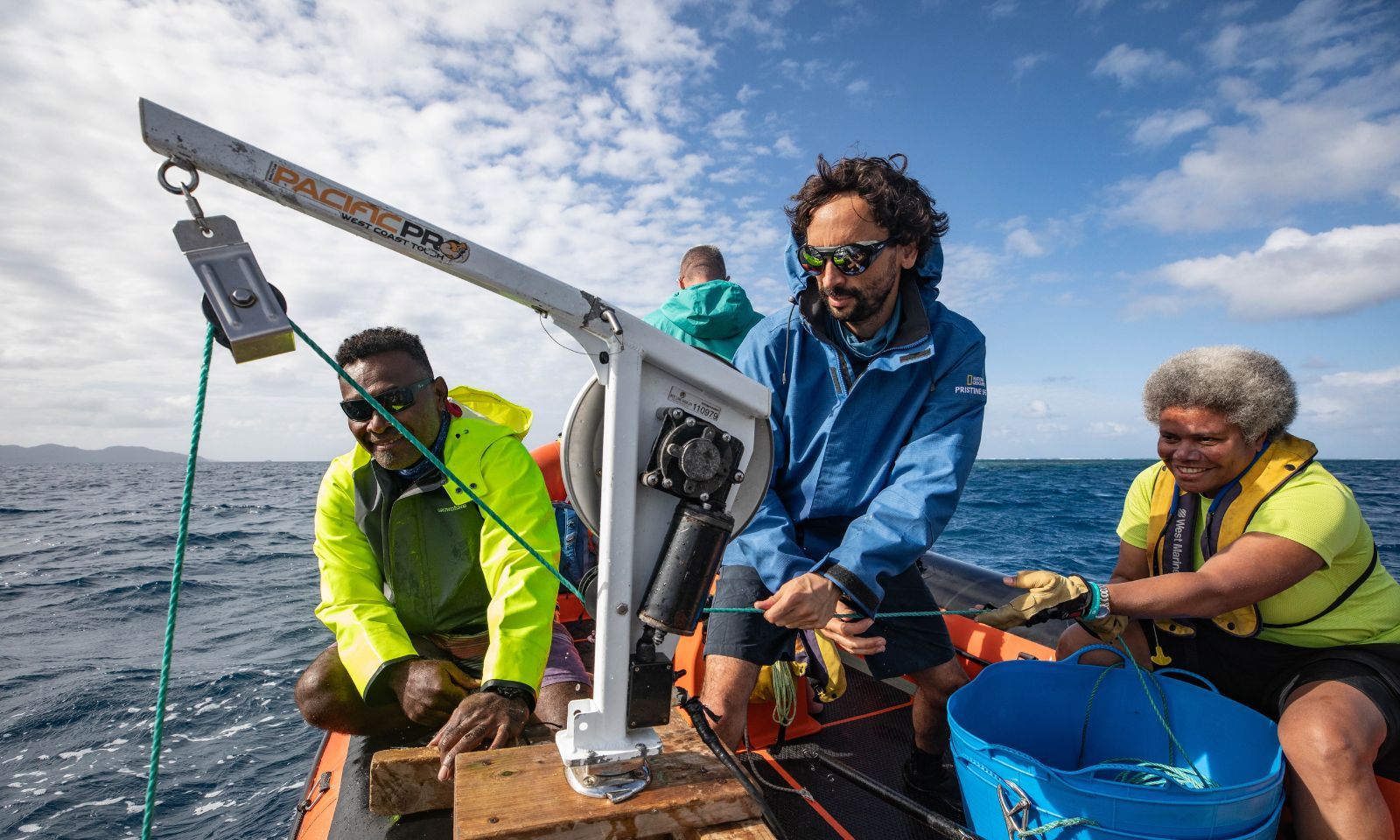
National Geographic marine scientist Juan Mayorga, Hon. Minister Lenora Qereqeretabua - Assistant Minister of Foreign Affairs in Fiji - and local partner Rovuama ‘Rambo’ Rabonu recover a baited remote underwater video system (BRUV). Photo/National Geographic Pristine Seas/Caitlin Bailey
The Kadavu Province is home to more than 60 locally-managed marine areas (LMMAs), which are community-led zones designed to ensure food security and preserve marine life. Moore’s team visited a Tabu area, a traditional, community-managed marine protected area located in Ravatiki, Kadavu.
During their dives, the team explored a clam garden planted by locals over 20 years ago, consisting of 11 giant clams (Tridacna gigas) and more than 24 smaller clams (Tridacna squamosa). They also discovered several large razor clams.
“It was incredible to see how this area that's been protected by community involvement is key to maintaining that protection over time. It was exciting for us to get to see something like that, something that the community was proud of and were excited to share with us.”

Christmas tree worms on a coral in the waters of Kadavu, Fiji. Photo/National Geographic Pristine Seas/Ollie Velasco
“We worked directly with them to ensure we were approaching it the right way. We were able to collect that information, give it back to the community, and they were thrilled with that and so were we.”
These expeditions prioritise education and outreach from the outset. While docked at Fiji’s Cuva Harbour, the team worked with their NGPS education unit and invited educators onboard for a Ship Day to learn about their research and film-making processes.
They also co-hosted a week-long Science Teaching and Learning Summit in partnership with the Pacific Community (SPC), bringing together educators and leaders to exchange traditional knowledge with marine science.
“It was great for our team to work directly with local educators because that informs the work that we do. We’re able to integrate the traditional knowledge with marine science and create these incredible resources for schools all over, not just here in Fiji,” Moore says.
“The educators for this summit came from over 14 countries and there were maybe over 50 educators in total. It was a nice wide net cast in this education summit and it was wonderful for us.”
The team plans to host another Ship Day at Vunisea on Friday, on the north shore of Kadavu, where 10 schools from around the island will be transported to the Argo to learn about and explore the NGPS’ work.
Watch Kelly Moore’s previous interview in July with PMN below.
They will conclude one more day of work on Saturday before returning to Suva for their next leg of the expedition, which will explore offshore areas. Moore looks forward to welcoming a new team of scientists, underwater media professionals, and local participants.
“I'm looking forward to that. It's bittersweet because I think at this point in the expedition, we're all one big happy family. We have our routine and start to bond with old friends and new friends. We have such a fondness for Kadavu, the local communities and local participants that it's bittersweet to say goodbye to them.”